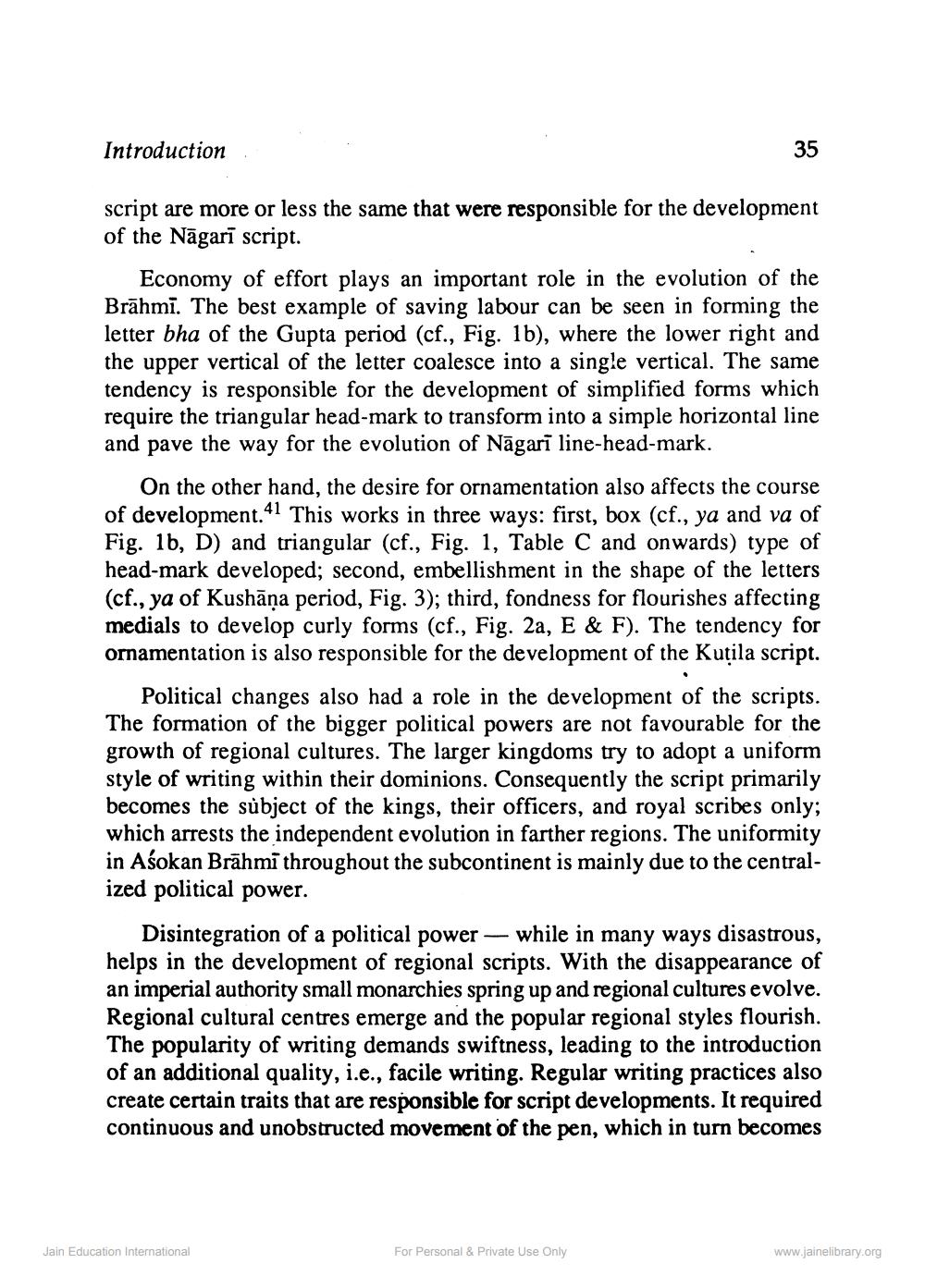________________
Introduction
35
script are more or less the same that were responsible for the development of the Nāgarī script.
Economy of effort plays an important role in the evolution of the Brāhmi. The best example of saving labour can be seen in forming the letter bha of the Gupta period (cf., Fig. 1b), where the lower right and the upper vertical of the letter coalesce into a single vertical. The sam tendency is responsible for the development of simplified forms which require the triangular head-mark to transform into a simple horizontal line and pave the way for the evolution of Nāgari line-head-mark.
On the other hand, the desire for ornamentation also affects the course of development.4l This works in three ways: first, box (cf., ya and va of Fig. 1b, D) and triangular (cf., Fig. 1, Table C and onwards) type of head-mark developed; second, embellishment in the shape of the letters (cf., ya of Kushāna period, Fig. 3); third, fondness for flourishes affecting medials to develop curly forms (cf., Fig. 2a, E & F). The tendency for ornamentation is also responsible for the development of the Kutila script.
Political changes also had a role in the development of the scripts. The formation of the bigger political powers are not favourable for the growth of regional cultures. The larger kingdoms try to adopt a uniform style of writing within their dominions. Consequently the script primarily becomes the subject of the kings, their officers, and royal scribes only; which arrests the independent evolution in farther regions. The uniformity in Asokan Brāhmi throughout the subcontinent is mainly due to the centralized political power.
Disintegration of a political power — while in many ways disastrous, helps in the development of regional scripts. With the disappearance of an imperial authority small monarchies spring up and regional cultures evolve. Regional cultural centres emerge and the popular regional styles flourish. The popularity of writing demands swiftness, leading to the introduction of an additional quality, i.e., facile writing. Regular writing practices also create certain traits that are responsible for script developments. It required continuous and unobstructed movement of the pen, which in turn becomes
Jain Education International
For Personal & Private Use Only
www.jainelibrary.org




